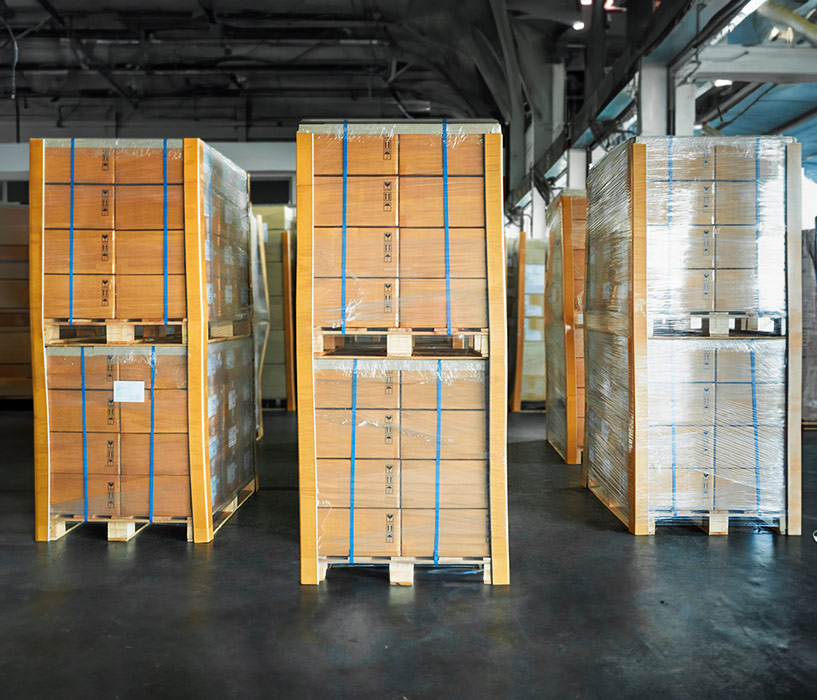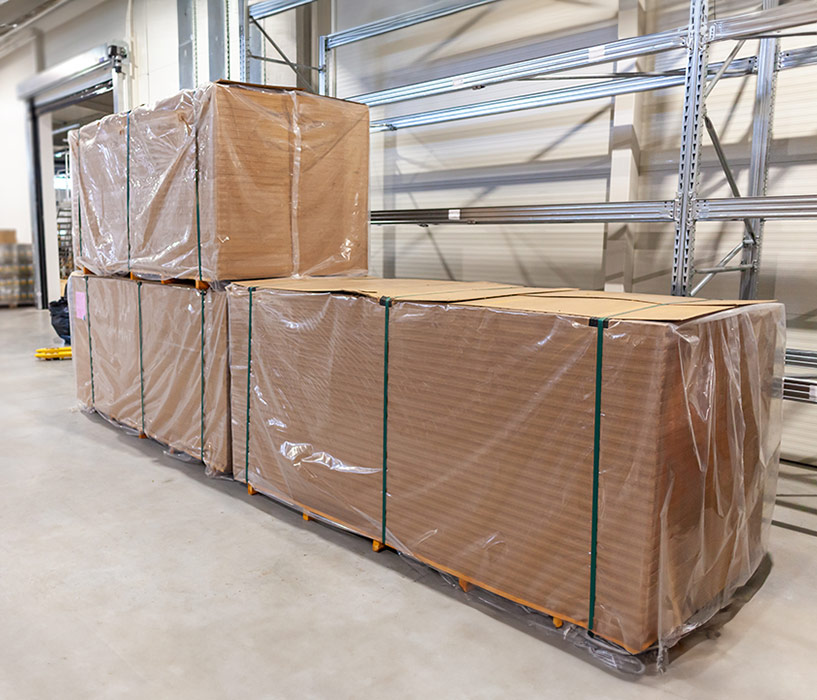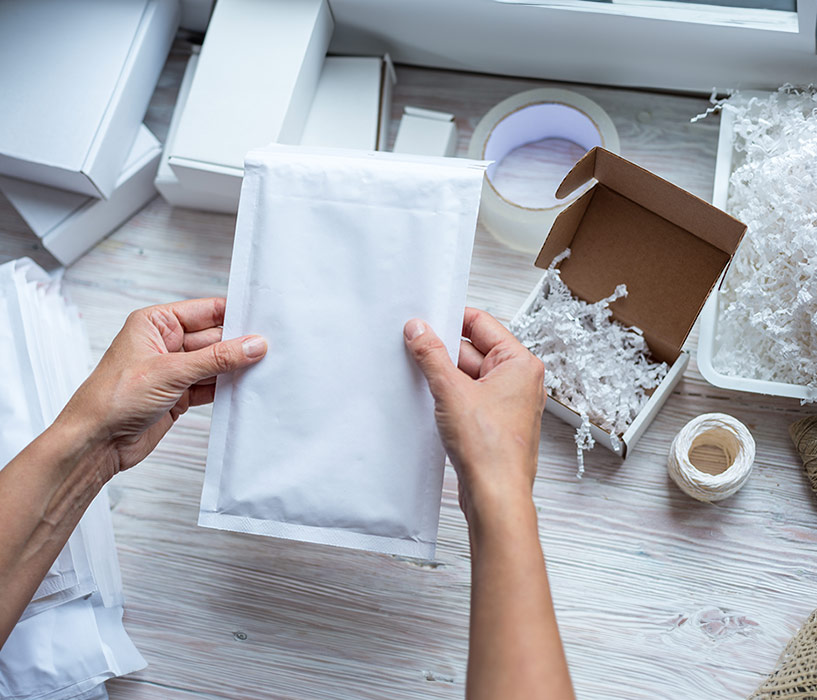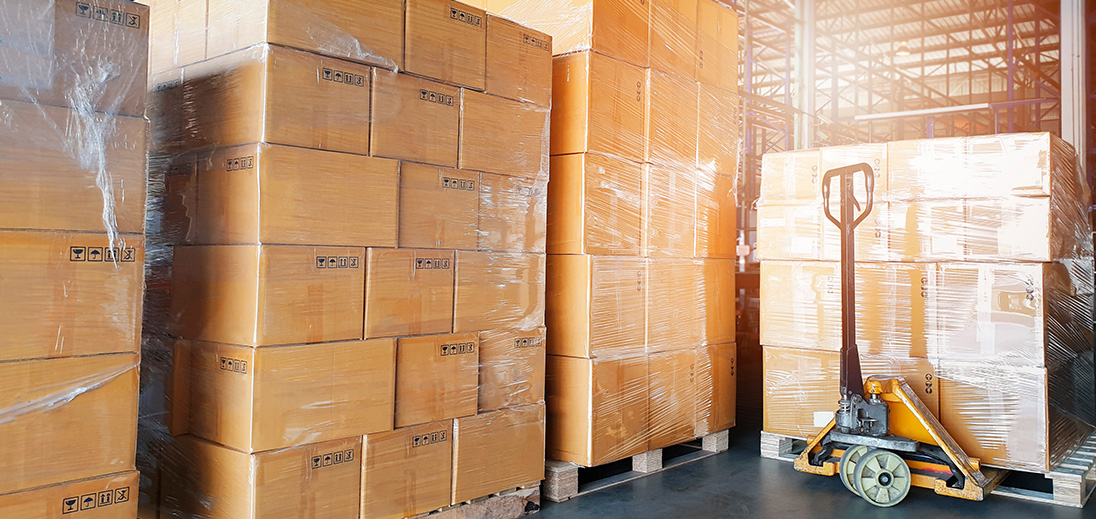How to fill free space in packaging and protect the product?
The most environmentally friendly and cost-effective solution is to pack each package full, making maximum use of the space of the respective box. Unfortunately, in many cases this is not feasible. How, then, can you optimise your packaging and adequately protect the product being transported? Here are some tips on how to fill up the empty space in your packaging - effectively and with respect for the planet!
The most environmentally friendly and cost-effective solution is to pack each package full, making maximum use of the space of the respective box. Unfortunately, in many cases this is not feasible. How, then, can you optimise your packaging and adequately protect the product being transported? Here are some tips on how to fill up the empty space in your packaging - effectively and with respect for the planet!
Parcel eco-fillers - a must-have of the 21st century
Free space in various types of packaging is the bane of all manufacturers and retailers, but not only! Anyone who has ever handed a parcel to friends or family has had to face this type of problem. Why is it so important? An inadequately packed parcel is at risk of being damaged. Too much free space means that the item inside has absolutely no protection or cushioning. Therefore, the contents of such a shipment can easily become broken, crumbled, deformed, cracked, or damaged in any other way. The contents of such a shipment can therefore easily become broken, crumbled, deformed, cracked or any other form of damage. Also, it is a major inconvenience during transport itself - if a box is empty, it can easily collapse under the pressure of the one placed on top of it. This in turn will upset the balance of, for example, the entire pallet, which can also lead to damage to other shipments.
At the same time, it is worth remembering that many of the fillers used so far have been made of plastic, which has contributed to general environmental pollution - between 2009 and 2019, the amount of packaging waste increased by as much as one-fifth in Europe. Using eco-friendly solutions in this area therefore seems to be an obligation... or at least a good practice!
Which fillers will make it possible to secure your shipment effectively and, at the same time, fit in with the concept of “green logistics” (a model for managing logistics systems to reduce their adverse impact on the environment)? Discover our favourites among the eco-friendly infill materials!


Paper in various forms
 The paper fillers we offer are products made from recycled materials. Importantly, they can be recycled, compostable or simply reused. Their form means that they can both block and immobilise the packaged items and create sufficient cushioning for them. Moreover, they also protect against any scratches or abrasions to the product. Their low cost is also a major advantage.
The paper fillers we offer are products made from recycled materials. Importantly, they can be recycled, compostable or simply reused. Their form means that they can both block and immobilise the packaged items and create sufficient cushioning for them. Moreover, they also protect against any scratches or abrasions to the product. Their low cost is also a major advantage.
You can choose between standard, simple paper fillers and decorative two-ply papers such as Geami WrapPak EX Mini. In the latter case, the first paper layer forms a honeycomb structure, which provides excellent cushioning for the packaged items. The other one is made of special anti-scratch tissue paper. Shipments secured in this way look very aesthetically pleasing and the risk of damage is minimised. At the same time, the filler is light enough not to affect the weight of the entire package (which is important from the perspective of the costs of the entire logistics).
Air mats
Such mats are divided into individual pillow-like chambers (available in different sizes). They can be filled with air to a degree of your choice, making them adaptable to any type of shipment. The subdivision into smaller sections allows folds to be created, thus effectively wrapping selected items. They are ideal for filling parcels of various sizes, including large-size parcels. Their important advantage is their low weight.
Most importantly from an environmental point of view, however, the materials used in the production of Antalis aerial filling systems are reusable and fully recyclable.
Plant-based air fillers
Where we can, we replace plastic with paper, but we also use other, environmentally friendly solutions. We are talking about different types of bioplastics, such as renewable plant waste such as leaves or husks, otherwise known as ”second-generation bio-resources”. These types of products are fully biodegradable! Renew Zero - an air cushion used to fill empty spaces in packaging - was created from these products. The product consists of 99% air and 1% film, which in turn was created from 50% of the aforementioned recycled and renewable plant waste and 50% of post-consumer recycled waste. Furthermore, it is worth recalling that plants absorb CO2 or emit negative CO2 emissions. Thanks to this, eco-fillers made from them leave no carbon footprint at all!
Packaging foam
For reuse, as well as possible recycling, packaging foam is also well suited. It is made from LDPE, or low-density polyethylene. It is very lightweight, resistant to water, solvents and all other chemicals. Its high level of flexibility is also a great advantage, as it will perfectly wrap objects of almost any shape. It also provides excellent cushioning and protection against scratches (it is abrasion resistant). At the same time, it is worth emphasising that this type of filler is also free of CFCs, i.e. it does not contain CFCs, which have a damaging effect on the ozone layer, which is extremely important in the context of global warming.
It is worth remembering, however, that when comparing the options described above, paper will prove to be the most eco-friendly in any comparison. Hence, in all possible situations, it is worth replacing it with at least the aforementioned foam. All the more so as there is a great deal of paper packaging available, including models suitable for effectively protecting small items, such as envelopes with a special paper filler.
So, as you can see, there are really quite a few solutions available nowadays, whose creators had the welfare of the planet in mind. Eco-friendly parcel fillers come in a variety of forms, shapes and can be easily matched to almost any parcel. What's more, when the recipient opens this type of package, he or she will probably immediately notice the use of an eco-solution, which has a positive effect on the image of the company. The benefits of using eco-friendly parcel fillers are truly numerous!
References:
1. Kołodziejczyk N., Kowalska M., Misztal A. (2022). “Green logistics” as a method of action for sustainable development. W: Frajczak-Kowalska A. (ed.), Problems and challenges of the contemporary logistics (pp. 157-172). Poznań: Rys Publishing 2022.
2. Pająk P., Rożnowski J. (2024) Potato starch and other biopolymers as an alternative to plastics - legislation, opportunities and challenges for the packaging industry. Food. Knowledge. Technology. Quality. 31, 1 (138), pp. 23-46.







